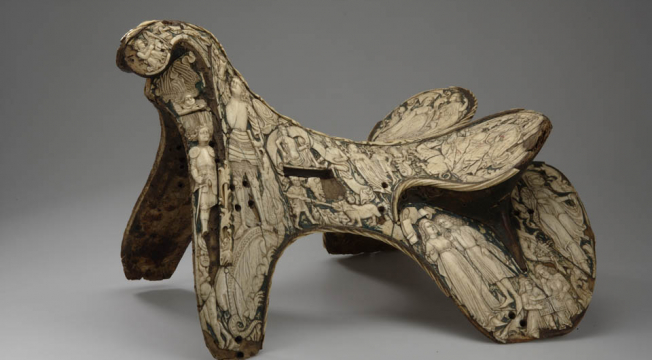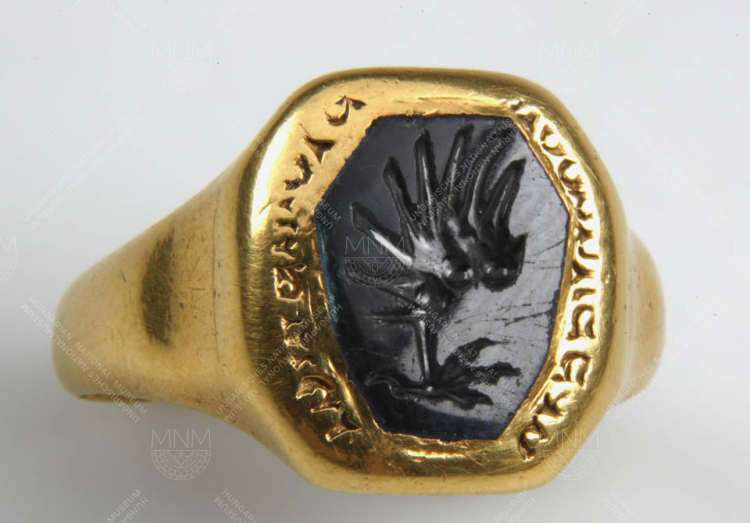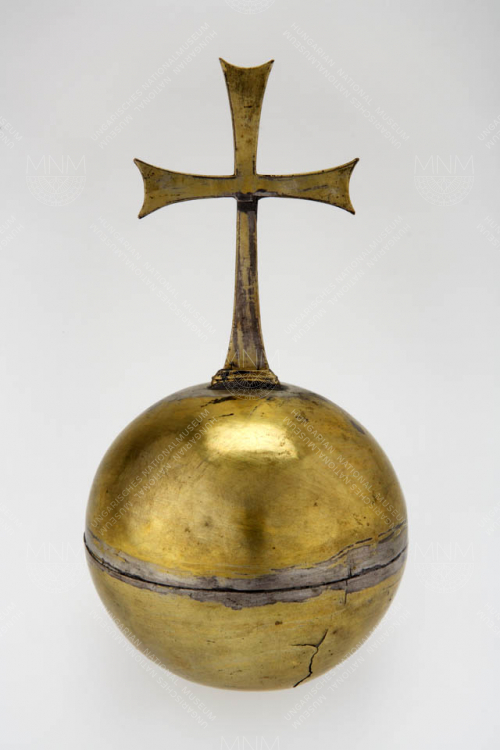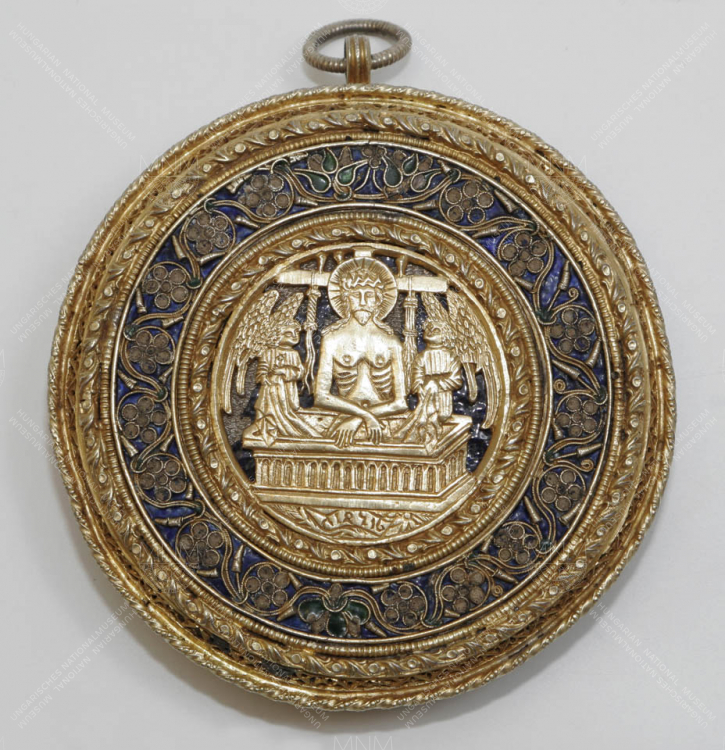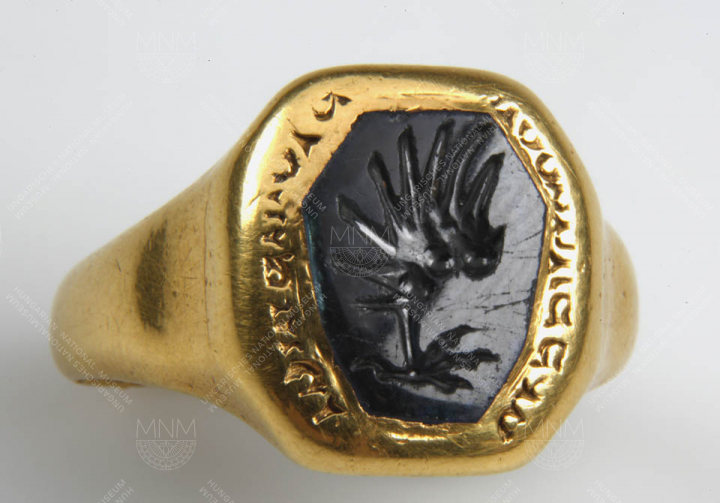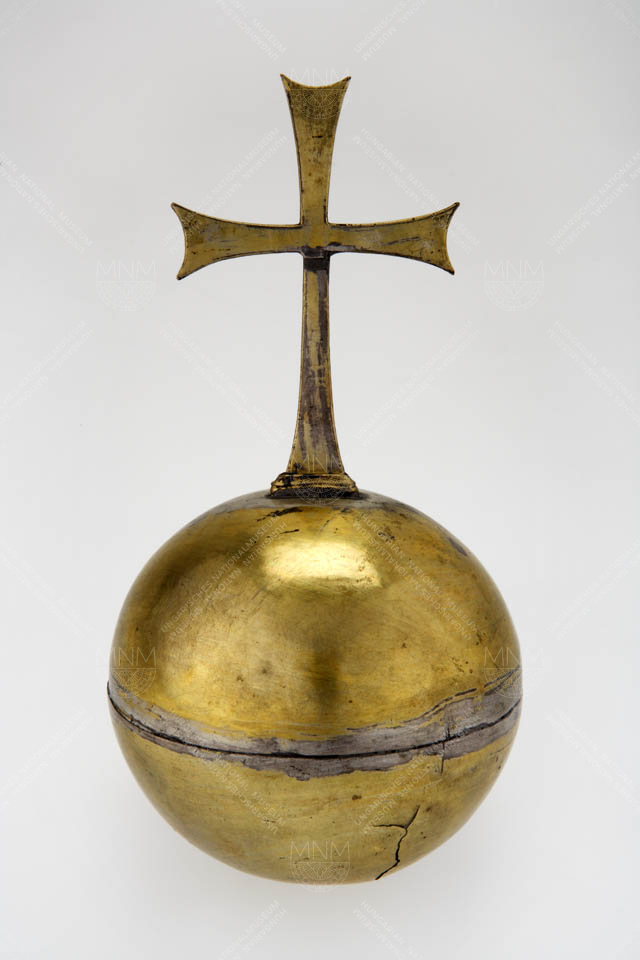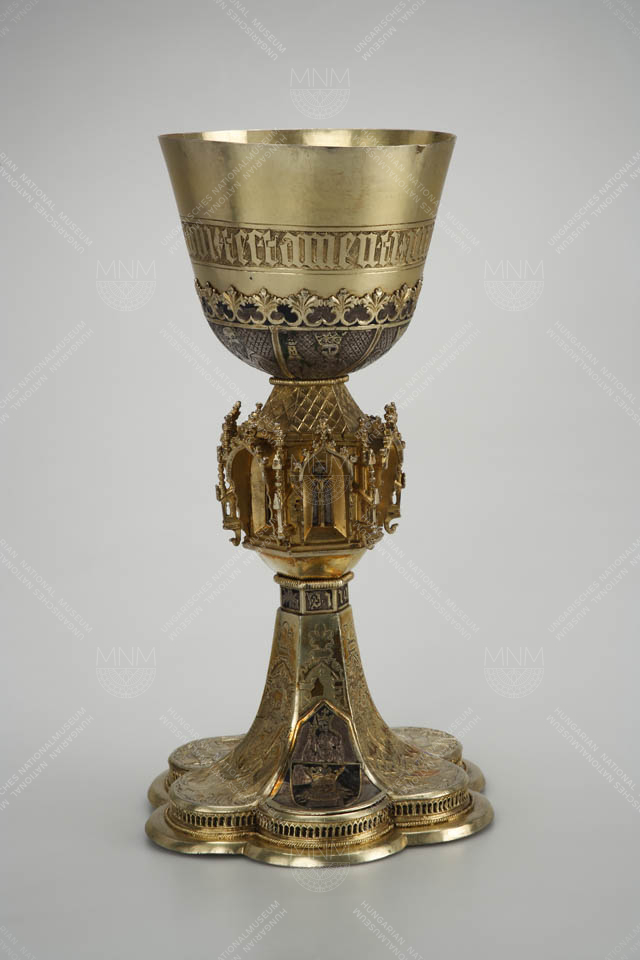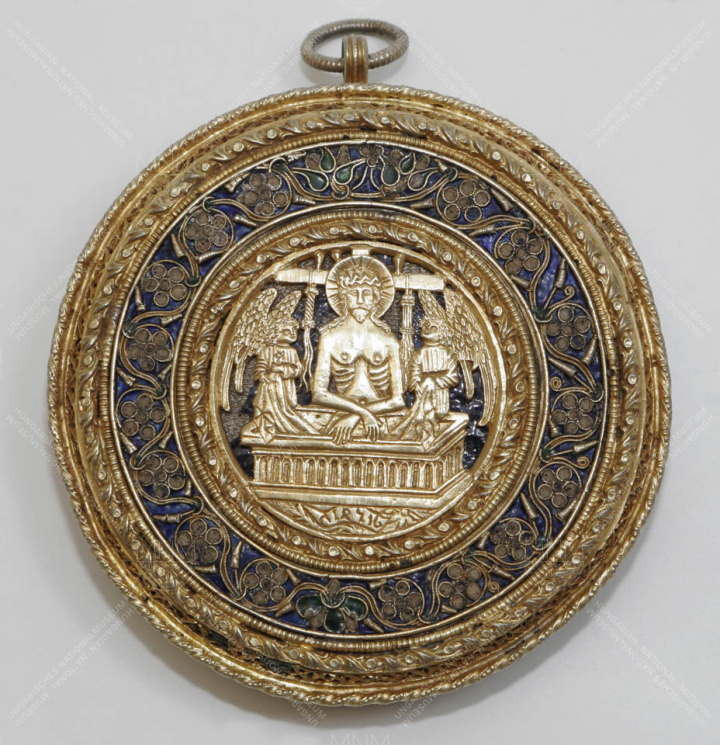
Room 3
During the 50-year reign of Sigismund of Luxemburg (r. 1387–1437), royal palaces were built in Hungary one after another (Visegrád, Buda, Pozsony [Bratislava, Slovakia]). These displayed the power of the ruler, who during this time was elected King of Germany and subsequently Holy Roman Emperor. Sigismund attempted to fashion an international policy, and this, naturally, had an impact on the domestic politics of Hungary. The outstanding relics in the Late Gothic style that are shown are first and foremost church fittings, altar vessels, and clothing. In the period which followed the death of Sigismund, the organising of the struggles against the Ottomans fell to János Hunyadi, who was elected regent of Hungary.
INTERESTING FACTS:
In 1401, the Hungarian barons held the king captive at Siklós. The head of the anti-Sigismund faction was the archbishop of Esztergom, János Kanizsai, who led the ‘Council of the Holy Crown of Hungary’; the escutcheoned ring displayed in the first glass cabinet on the left was lost by him.
The Order of the Dragon founded with 22 members in 1408 by Sigismund and his consort Barbara of Cilli was named for the dragon slain by St. George. Among the members of the order was the notorious Dracula (Vlad Ţepes, voivode – i.e. ruling prince – of Wallachia), to whom tradition links the Jankovich saddle.
As King of Germany and as Holy Roman Emperor, Sigismund esteemed King St. Ladislaus. In 1408, Sigismund arranged that his tomb would be next to that of Ladislaus in Nagyvárad (Oradea, Romania). It was there that he was interred following his death in Bohemia in 1437; evidence of his tomb in Nagyvárad was discovered in 1755.







